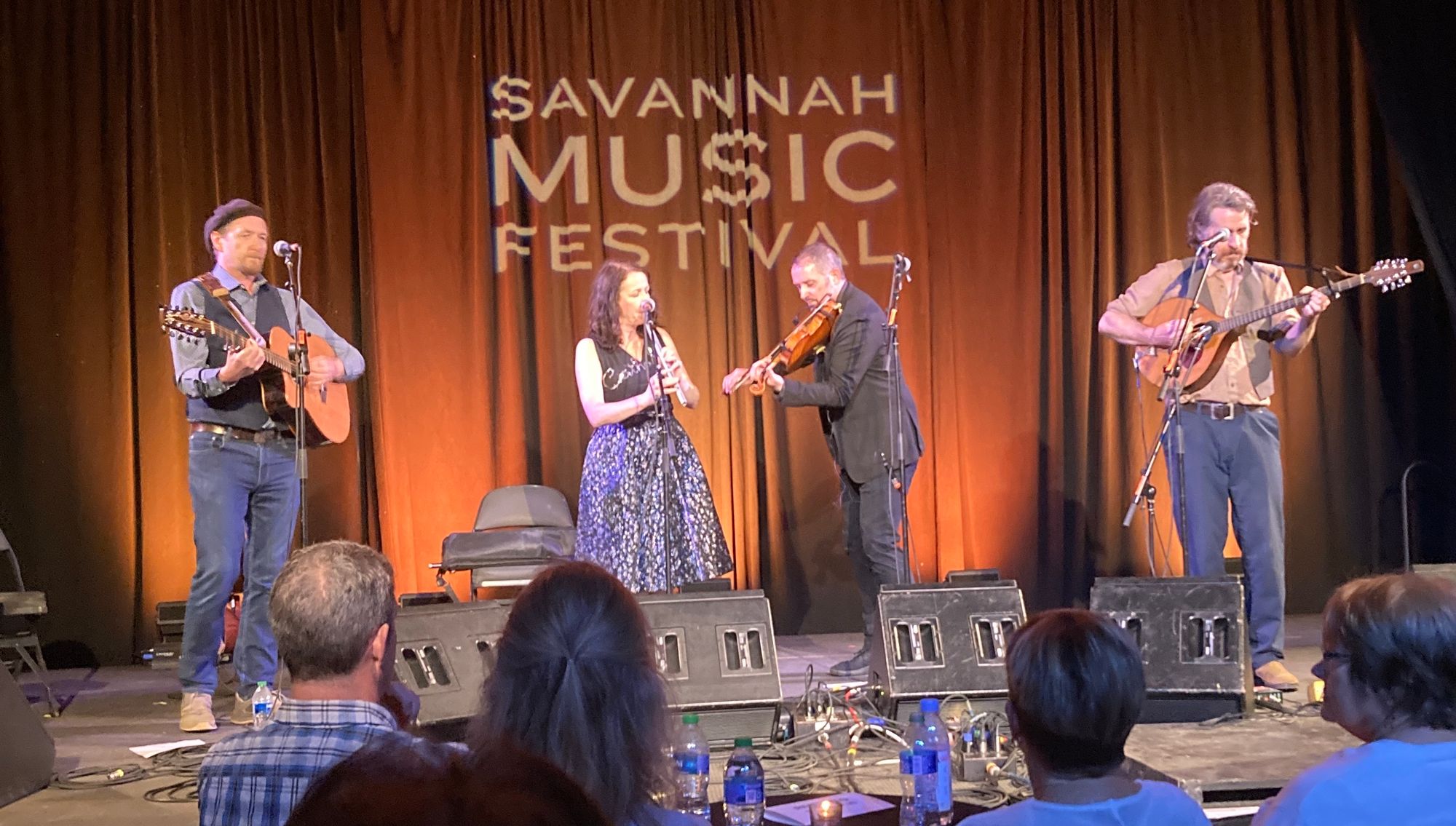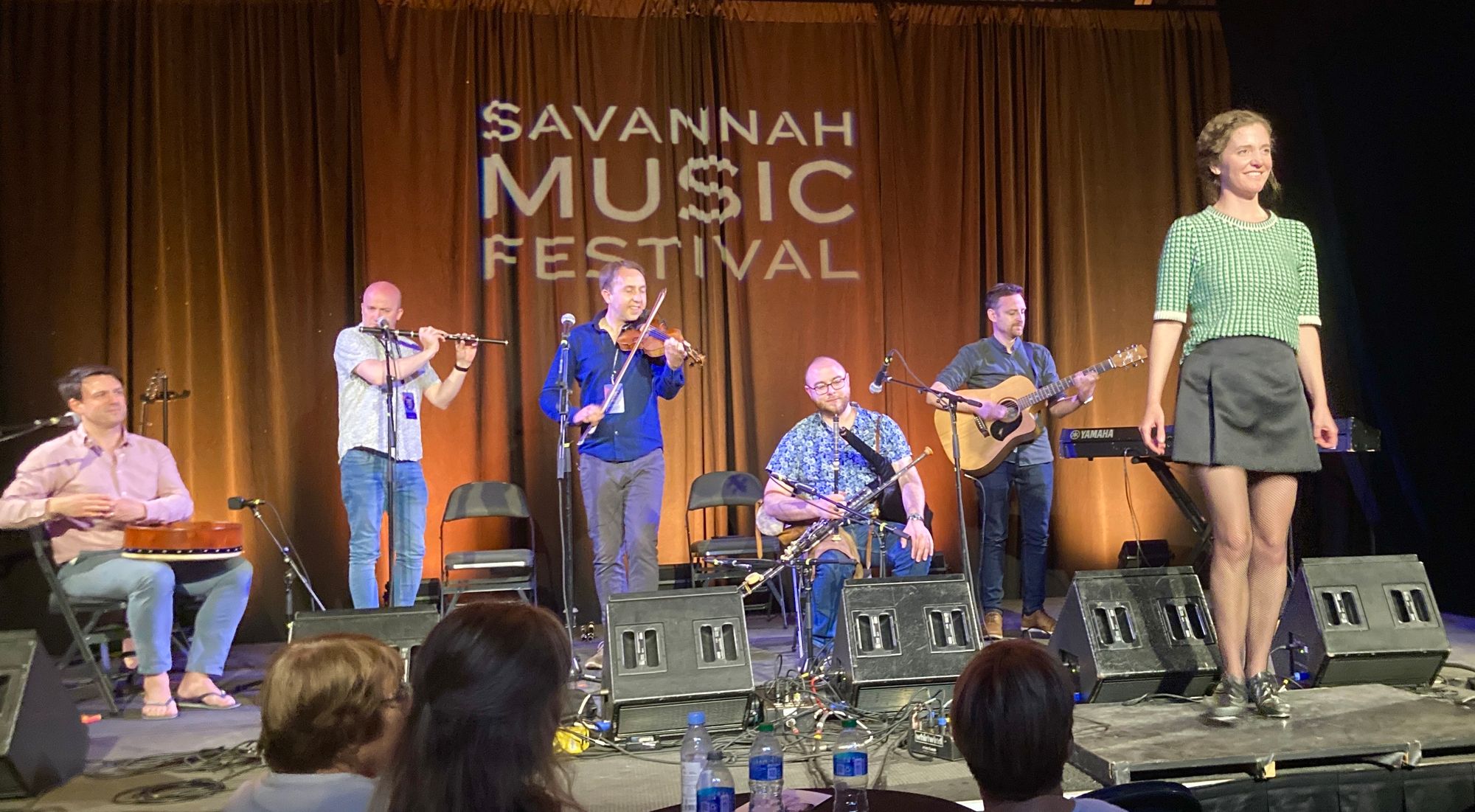THE Irish group Teada is arguably the most vibrant and hard-working traditional Irish music ensemble in the world today. Together over 20 years, they combine a relentless international touring schedule with an impressive ongoing discography.
Eschewing trendiness in favor of robust performances of old-school Irish tunes, they also bring the party. This is a group that above all loves performing live. Their joy is infectious, and it’s their passion for the music that keeps these often centuries-old traditional tunes sounding fresh and alive.
Teada headlined an all-Irish double bill Friday evening at the Metal Building at Trustees’ Garden, on the penultimate day of the Savannah Music Festival. I was a bit worried that the Patty Griffin SMF show, going on at the same time a few blocks away at the Lucas, would hurt Teada’s crowd. But thankfully that wasn’t the case, and this show had a large and appreciative audience.
Teada’s founder and driving force is Sligo fiddler Oisin Mac Diarmada, who commands the stage with his assertive and engaging fiddle playing and his humorous banter, backed up with an encyclopedic knowledge of all forms of Irish traditional music and history.
This touring lineup of Teada actually differs from what’s listed in the SMF catalog. Frequent collaborators Sean Gavin and Patrick Doocey joined the band on pipes/flute and guitar, respectively, while a couple of “regular” members weren't on this leg of the tour.
Specifically, Gavin – the only American on the stage -- plays the uilleann pipes (Irish for “elbow”), a remarkable and complex instrument that combines the chanter and drones of the typical Scottish Highland pipes you’re all familiar with, along with a set of accordion-like “regulators” that play chords.
Unlike the Scottish pipes, you don’t blow into the uilleann pipes at all – it’s just the bellows under the arm pushing all that air... hence "elbow" pipes.
In short, it’s quite a contraption. It’s a one-man band, is what it is, and Gavin’s playing was a particular highlight for me, bringing out the wide tonal range and dynamics of the instrument, in contrast to the more limited Highland pipes.
I’d have liked to hear more from Doocey, whose one breathtakingly evocative guitar solo was another highlight of the set.
Bodhran player Tristan Rosenstock has been with Mac Diarmada from the beginning, and is one of the foremost masters of that special Irish drum. As with the uilleann pipes, it’s sometimes hard to find bodhrans being played out in the wild, and Tristan’s rhythms clearly take the band to another level.
Another Teada founder, Damien Stenson, is a brilliantly sensitive and fluid flute player.
But I’d wager that many in the audience will say the real crowdpleaser of the night was Samantha Harvey, the band’s keyboard player who also happens to be a award-winning, champion Irish dancer.
Harvey frequently came out from behind her Yamaha to indulge in some expert solo stepdancing down at the very edge of the stage. The rhythm of her steps took the form of another percussion instrument, further helping to drive the band forward.
“Opening” for Teada – which really means that someone has to go on first – was another Irish ensemble, The Alt. They were joined by another fiddle player named Oisin, Oisin McAuley. His style seems a bit more classically influenced, actually using a small amount of vibrato, which is usually absent from Irish/Scottish fiddling technique.

The Alt is more vocally driven than Teada, and provided a good contrast to the latter group’s instrumental focus. Of particular note is the woodwind mastery of Nuala Kennedy, who played a wide range of flutes and tin whistles to great effect.
I’ve seen plenty of Irish bands use a bouzouki, a traditional Greek instrument that cross-pollinated with Irish bands during the first Celtic Revival of the late 1960s-early ‘70s and is now commonplace in the Irish traditional scene. But the Alt does something I’d never seen another Irish band do: feature two bouzouki players, one almost craftily built to resemble a regular six-string guitar.
The blending of the two styles became reality in the encore, when both bands took the stage together to deliver a stirring, and honestly humorous, old murder ballad.

